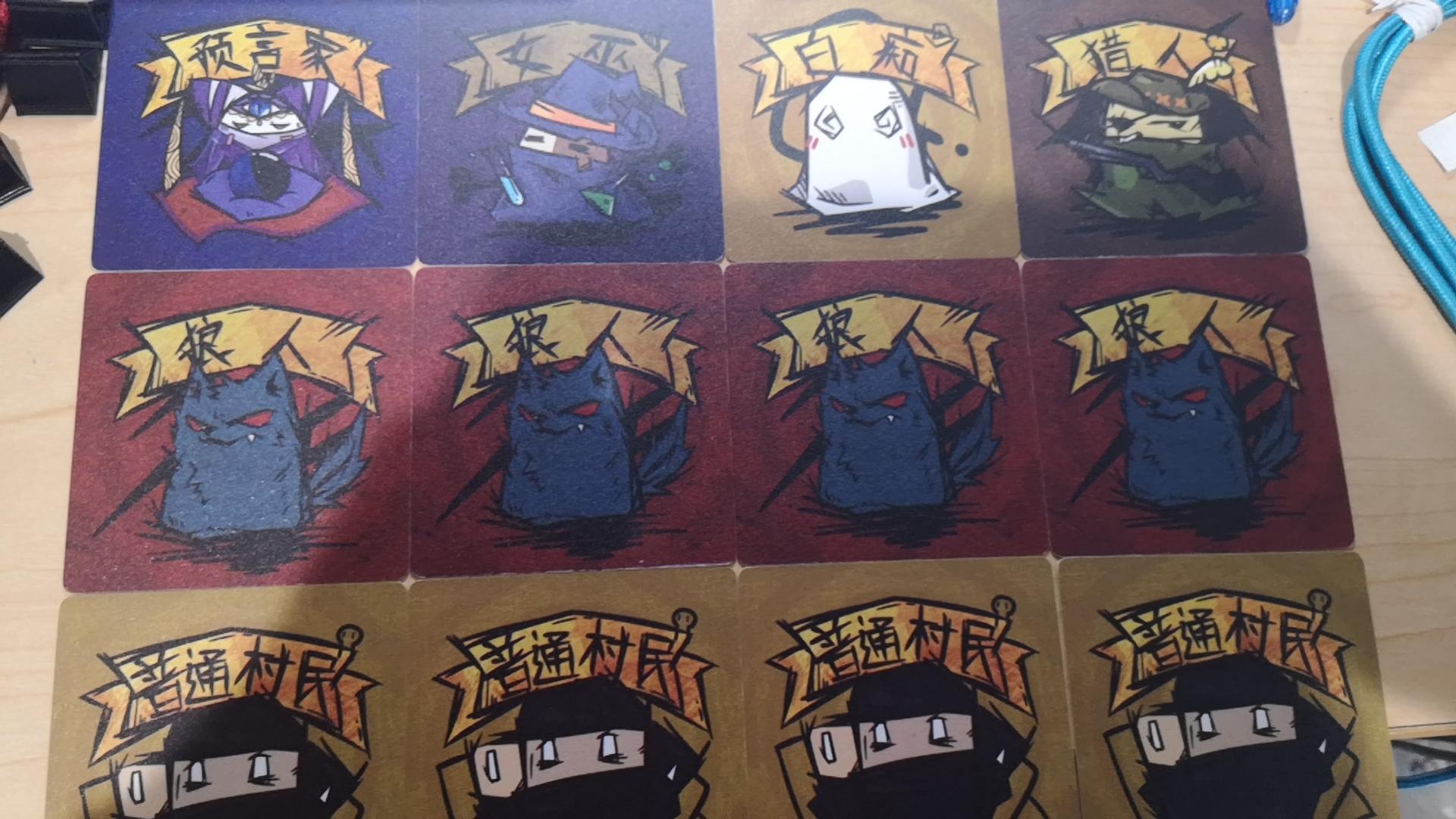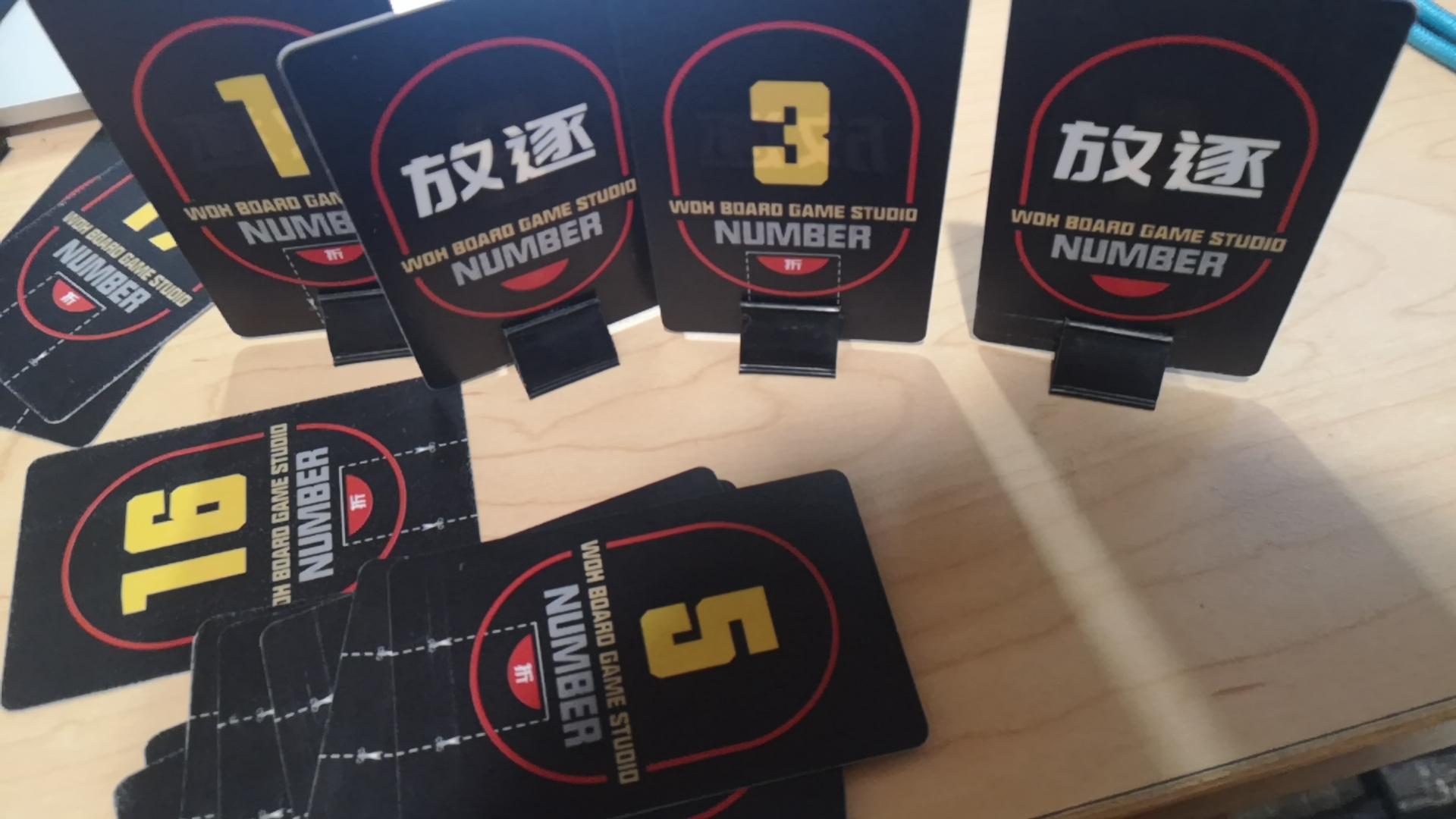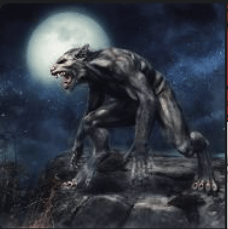The game my team is working on is a combination of social deduction and drawing. In this critical play, I’m playing the social deduction genre.
The game I played is the Chinese version of Werewolf with a total number of 12 players. It is a little bit different from the American version or Mafia. It’s originated from the traditional version of Werewolf, which was invented by Dimitry Davidoff as a teaching tool. The theme of the game is that there is a village, and there are several Werewolves that disguise themselves as villagers during the day but kill the others during the night. The Werewolves want to eat up everyone, while the villagers want to oust all of the Werewolves.
Here I’m introducing the configuration that I played:
- Moderator: Not in the game. Knows all information needed in the game. Controls the progress and sets the timer.
- Werewolf * 4: Wake up at night together and uniformly decide a villager to kill.
- Villager * 4: Sleep at night, no extra superpower.
- Seer: Wakes up at night and selects another player, and the Moderator would tell them whether that player is a Werewolf or not.
- Witch: Wakes up at night after the Werewolves. Has one poison and one elixir, can use at most one bottle per night.
- If the elixir is not used, the Moderator would tell them who’s killed by the Werewolves that night, and the Witch then chooses whether to use the elixir to save that player or not; otherwise, the Moderator does not reveal the information of who is killed. The Witch can never save themselves.
- If not using the elixir, the Witch can choose to use the poison to kill another player.
- Hunter: Can shoot another player upon death by revealing their identity, unless being poisoned by the Witch. Wakes up at night after the Witch to know whether or not they have been poisoned or not.
- Idiot: Does not wake up at night, seems do not have “superpower”. If being ousted during the day, the Idiot could reveal their identity, and could still behave as being alive, but can no longer vote, and is considered dead.
Note: No player is allowed to reveal their identity (except the Idiot being ousted during the day, or the Hunter not poisoned by the Witch) upon death.
The winning condition for the Werewolves is to kill either all villagers with superpower (Seer, Witch, Hunter, Idiot), or all villagers without superpower. The winning condition for the villagers is to oust/kill all Werewolves.
This version of Werewolf is a team vs. team game, where one team with fewer people know each other, while the other team with more people do not know each other. I would say it is an outwit game, that both teams need to figure out the roles of the other one to win.
Since we played it professionally, we use number cards with little stands in front of each player to denote the players. All dead players needs to leave the circle formed. As shown from the image below, each card has two sides, with one side containing a large and clear number assigned to the player, the other side has a large “放逐” denoting the player is dead.

So the magic circle would be the room containing all of the players, alive or dead.
Here is the procedure of the game:
- Everyone draws identity and is assigned a number. The player sitting on the left hand side of the Moderator is number 1.
- Looping until one party wins:
- Night:
- Werewolves open their eyes and tell the Moderator the player to kill. Everyone closes their eyes.
- The Witch opens their eyes. The Moderator says “Tonight, this player is killed, do you want to save?”. If the Elixir is used, the Moderator doesn’t point to anyone; otherwise, the Moderator points to the player selected by the Werewolves. If the Witch doesn’t use the Elixir this night, they can pose a number indicating the player to poison. Everyone closes their eyes.
- The Moderator checks winning condition. If one party wins, stop the game.
- The Hunter opens their eyes. The Moderator shows them whether they have been poisoned or not. Everyone closes their eyes.
- The Seer opens their eyes and selects a player to verify. The Moderator tells them whether or not the selected player is a Werewolf or not.
- Daytime:
- Each player takes turn (based on time or the player being dead last night) to speak. Each player has 1.5 min to talk. After all players finish talking, start voting and oust one player.
- The Moderator checks winning condition. If one party wins, stop the game.
- If the ousted player is the Hunter or the Idiot, they can choose whether or not to reveal their identity or not. If not revealing, continue; if revealing, they have to use their superpower.
- Night:
The type of fun intended is challenge. It is very challenging for all Werewolves to find the villagers with superpower, especially the Idiot, who generally behave as a normal villager. For all the villagers with superpower, they need to reveal information they know to other good villagers without being noticed by the Werewolves. For all the other villagers, since they are not receiving any information during nighttime, it is ridiculously challenging for them to find their team.
Another challenging part for the Seer is to persuade the others that they are the correct Seer. Normally, two players would claim themselves as the Seer, the true Seer and a disguised Werewolf. Since the good party does not know each other, while the Werewolves are a real group, it is even harder for the Seer.
Yet another challenge is to express everything within a given timeframe. Since this version of the game sets timer during daytime, and the players can not talk anything if it’s not their assigned time, how to compile all noticed information in such a short period of time is challenging. Besides, the Werewolf needs to intentionally twist other players’ speaking to oust those players, it is a difficult part too.
There are many versions of graphic design, all of which are super cool. The images I showed earlier in this post are one of the versions. In the first row, the cards are the Seer, the Witch, the Idiot, and the Hunter. The second and third row are role cards for the Werewolves and normal villagers, respectively. Since this is a Chinese version of Werewolves, all roles are written in simplified Chinese characters. They are clear and readable.
The card design fits the role too. Even the illiteracies can use this set of cards to play too.
- The card for the Seer has an eye in the middle, indicating the wisdom of the character.
- The card for the Witch does draw a figure of a witch, and even has two bottles of medicines too. Besides, the elixir is always blue, and the poison is always green. The two bottles are in synch with the character too.
- The card for the Idiot is a ghost with swirling eyes. The swirling eyes always indicating some sorts of stupidity or “not understanding”, so it fits the name “idiot” well. On the other hand, when the Idiot is ousted during daytime, they can reveal their identity and stay in the game, though still considered as dead. It is exactly how a ghost behaves. So the ghost-design is also very fit.
- The card for the Hunter is exactly a hunter with a gun.
- The card for the Werewolves are the wolves.
- The card for the normal Villagers are indeed just human beings. They look afraid, which fits the story setting too.
- Also notice that the color for the Idiot is the same as that for the normal Villager. It makes sense because the Idiot is exactly the same as the Villager except death.
- All of the other color choices make sense too.
Besides, the number cards in front of each player are very clear and informative too. With the cards, the nighttime actions are much easier to operate. The survival condition of each player are also indicated clearly.
I personally really enjoy this set of cards.
I prefer the Chinese version of Werewolves much more than other games in this genre.
- In Blood on the ClockTower, dead people can still talk and vote. Besides, the information flow is very unclear, as even the Moderator can tell lies. In contrast, in this version of Werewolves, the Moderator is supposed to never give any wrong or unclear information.
- In most other games in the genre, including but not limited to Blood on the ClockTower and Mafia, there is not a set timeframe entirely for one player to talk, instead, all players discuss with each other. Being an introvert, I’ve barely never able to talk anything during this large and messy group discussion.
- Unlike One Night Mafia, which does not have a full set of tactics but just based on the acting skill and luck, this version of Werewolves focus more on social deduction and logic, and a more strategic way to deceive other players.
- Unlike Goose Goose Duck or Among us, this game has both analog and electronic versions. The analog version gathers everyone together in a same room, and is good for making new friends and getting to know each other.
One bad consequence of this serious game is that it doesn’t handle abuse well. Since all players play the game seriously, some of them play with a rigid set of “formulas”. When they meet other players that are more free, it’s possible for them argue with each other badly. The game doesn’t handle that part at all.
There are three things I would change:
- Create more configurations of the game. There are tens of different configurations, but I’m looking for more.
- Handle abuse, such as adding “no quarrel” into the winning condition.
- Come up with something so that the players die in the early stage do not feel boring.



